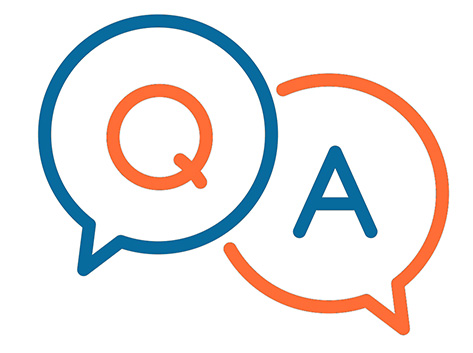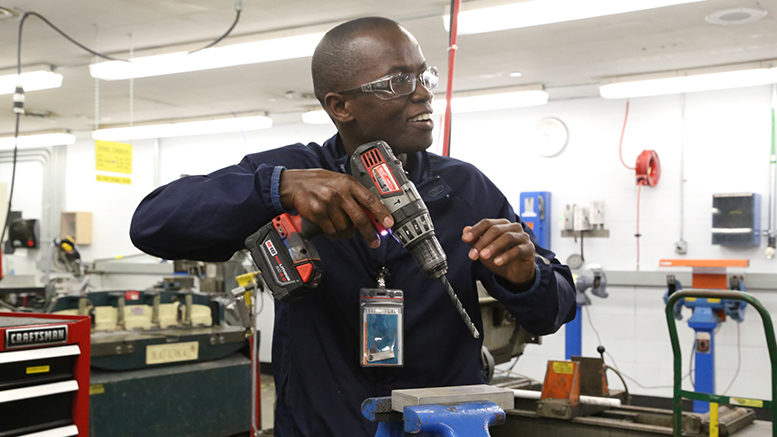You’ve probably heard the saying that only death and taxes are certain. Maybe add having a 3M product at home, work or wherever you go to that list.

Whether it’s the popular N95 mask, adhesives, household or commercial cleaners or the vast number of other products it makes, 3M needs a massive skilled workforce to create and manufacture those items. In fact, the company headquartered in St. Paul, Minnesota, has more than 100,000 patents and about 95,000 employees worldwide.
So when the science-focused multinational conglomerate corporation issues a report about workforce-related issues, people take notice. Its latest State of Science Index for the U.S. highlights persistent gaps in Americans’ views on education and careers related to STEM and the skilled trades. We asked 3M’s Michael G. Vale about some of the report’s findings and potential solutions to the challenges it noted. Vale is Group President for 3M’s Safety & Industrial Business, which includes personal safety, adhesives and tapes, abrasives, closure and masking systems, electrical markets, automotive aftermarket and roofing granules.
* * *
According to 3M’s recent report on the State of Science in the U.S., skilled trades continue to have an image problem. Most Americans agree there is a need for more skilled trade workers, yet 71% say despite their respect for the profession they would not pursue a skilled trade themselves. What is causing that disconnect and how can it be fixed?

Skilled trades in the U.S. undoubtedly have an image problem. As you mention, our 2022 State of Science Index – an annual global research study exploring trust in science and its relevance to our everyday lives – found that despite their respect for people who pursue skilled trades, nearly seven in 10 Americans would not pursue a skilled trade career themselves. This poses a barrier to replenishing the skilled trade talent pipeline.
This disconnect can arise from the misperception that skilled trades do not provide promising career opportunities. While some may believe this, our survey found that nearly all Americans believe the workforce needs more skilled trade workers (94%). More so, most agree there is a lot of opportunity in skilled trades. This perception is higher in America when compared to the global average, too – 90% vs. 82%, respectively.
On a positive note, Americans associate trade school with career success, and most believe vocational/trade schools provide the educational foundation needed to have a successful career. Americans also believe they would earn as much money in a skilled trade as they would in a career that requires a degree from a traditional four-year university or college – further validation that trades can provide many promising, and profitable, career opportunities.
To combat misperception of skilled trades, we need to highlight the many educational and career paths available, and support young students in their pursuit of a trade education. Our survey found there are continued barriers to pursuing a skilled trade – from affordability, to not even knowing this was a career option.
For example, within 3M’s Safety & Industrial Business Group, we’re committed to raising awareness of skilled trades as a viable career because it can help solve the skilled trade labor shortages our customers are facing, while building equity in our communities—we know Black Americans and U.S. Hispanics continue to be underrepresented in the trades. We’ve collaborated with middle and high schools in both Austin, Texas, and the Twin Cities in Minnesota to provide information to students on trade careers and schools, knowing not everyone wants to (or can afford to) pursue a four-year college degree. We know students start to form an “occupational identity” – thinking about what’s possible for them to do as a career – as early as middle school, so it’s important we start to raise awareness and focus education at that level.
A growing number of businesses are re-examining what they seek in potential employees, especially in what credentials they hold. Some are even re-writing job requirements that previously required a baccalaureate. The current worker shortages seem to have accelerated that. What does 3M look for in job applications, in particular for technical jobs?
We seek to hire talent that not only brings the skills needed to thrive in individual roles, but the perspective needed to support and advance teams as well as all of 3M. Sometimes, this experience includes a college or university degree, but it is not always required. For some roles, four years of relevant work experience and/or professional training can be just as valuable as higher education – especially when it comes to technical positions, where acquired industry knowledge is an asset.
In addition, we like to look for candidates with leadership experience. This may be directly related to the jobs they’ve held, but we’ve found that engagement with, and involvement in, the community is an equally good predictor of success. This kind of experience might come from civic groups, military service, professional organizations, volunteering or other activities that encourage connection and service.
Many companies are also seeking to increase the diversity of their workforce, including women, people of color and LGBTQ+. Can you describe 3M’s efforts?
At 3M, we recognize there are several barriers and inequalities in the workforce for women, people of color, and people in the LGBQT+ community. One major obstacle is that many people aren’t even seeing gaps in representation that clearly exist. Our 2022 survey found that only 57% of Americans believe a gender gap exists in the STEM workforce; 56% believe there is a racial gap; and only 40% see a LGBTQ+ gap. These perceptions don’t match reality. The country needs greater acknowledgment of these gaps to work on closing them.
To help close these gaps, 3M is focused on leveling the playing field for all individuals. While we are making strides and working to break down barriers, we need to recruit and highlight more diverse scientists. Improving representation in STEM can encourage younger generations and allows them to think, “if I can see it, I can be it.”
Since joining 3M in 1992, I have seen tremendous strides in 3M’s commitment to encouraging diversity. For instance, we have set goals to advance economic equity by creating five million unique STEM and Skilled Trades learning experiences for underrepresented individuals, are working to address racial opportunity gaps through workforce development initiatives in local communities, are committed to doubling the pipeline of diverse talent in management globally, and have signed on to the Human Rights Campaign’s Business Coalition for Equality Act.
What education and training programs is 3M involved in — whether with K-12 and colleges or internally — to help develop that career pipeline? Where do community colleges fit in?
At 3M, we are working to ensure that younger generations are receiving adequate training and opportunities through education. As I mentioned, we’ve set a global, education-focused goal to create five million unique STEM and Skilled Trades learning experiences for underrepresented individuals by the end of 2025 – which includes scholarships, internships and robust student services, varying experiential learning opportunities, 3M gives monetary investments, and volunteerism. We launched this goal in 2021, and at the beginning of 2022 have started to measure the number of 3M-supported learning experiences in which individuals participate, including those pursuing credentials or degrees linked to family-sustaining job areas in STEM or skilled trades.
Additionally, 3M works with schools, universities, community colleges and trade schools, and other community organizations around the world to help students and teachers have the tools, resources, and knowledge they need to succeed in STEM and to encourage interest in science and skilled trade careers.
For example, our 3M Manufacturing and Academic Partnerships (MAP) program introduces students to a career in manufacturing while our 3M Teachers Working in Science and Technology (TWIST) program provides teachers an opportunity to get real-world STEM experience by working in 3M labs and manufacturing facilities during the summer to enhance their knowledge of how science is applied to life. We also offer 3M TechTalks, where 3M volunteers inspire students to pursue STEM careers. These presentations broaden students’ understanding of what science and engineering careers are and help them see themselves as a scientist or engineer.
Through these programs, we hope to further develop the STEM and skilled trade talent pipeline and show younger generations that these careers – and success – are relatable and attainable.

